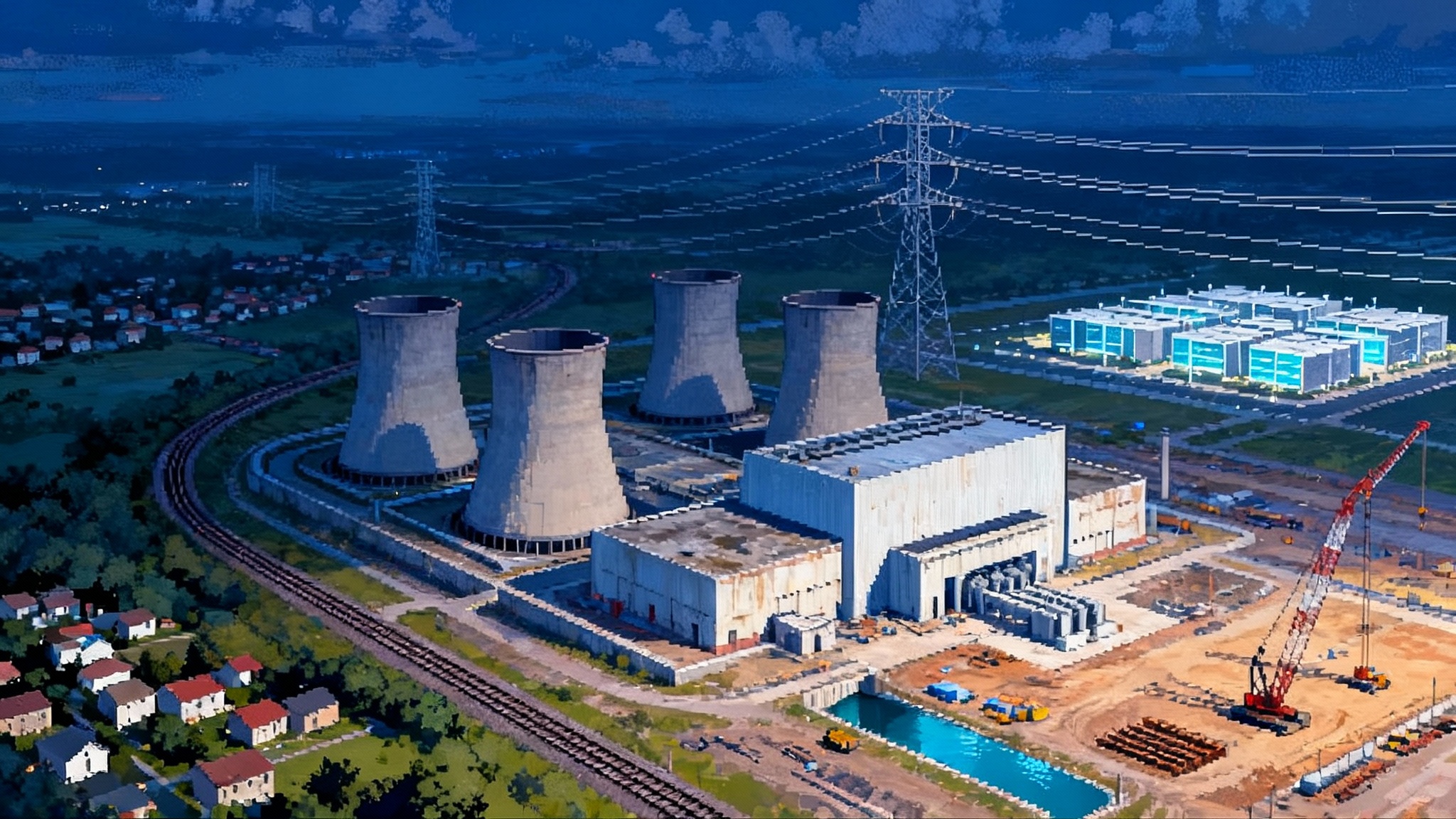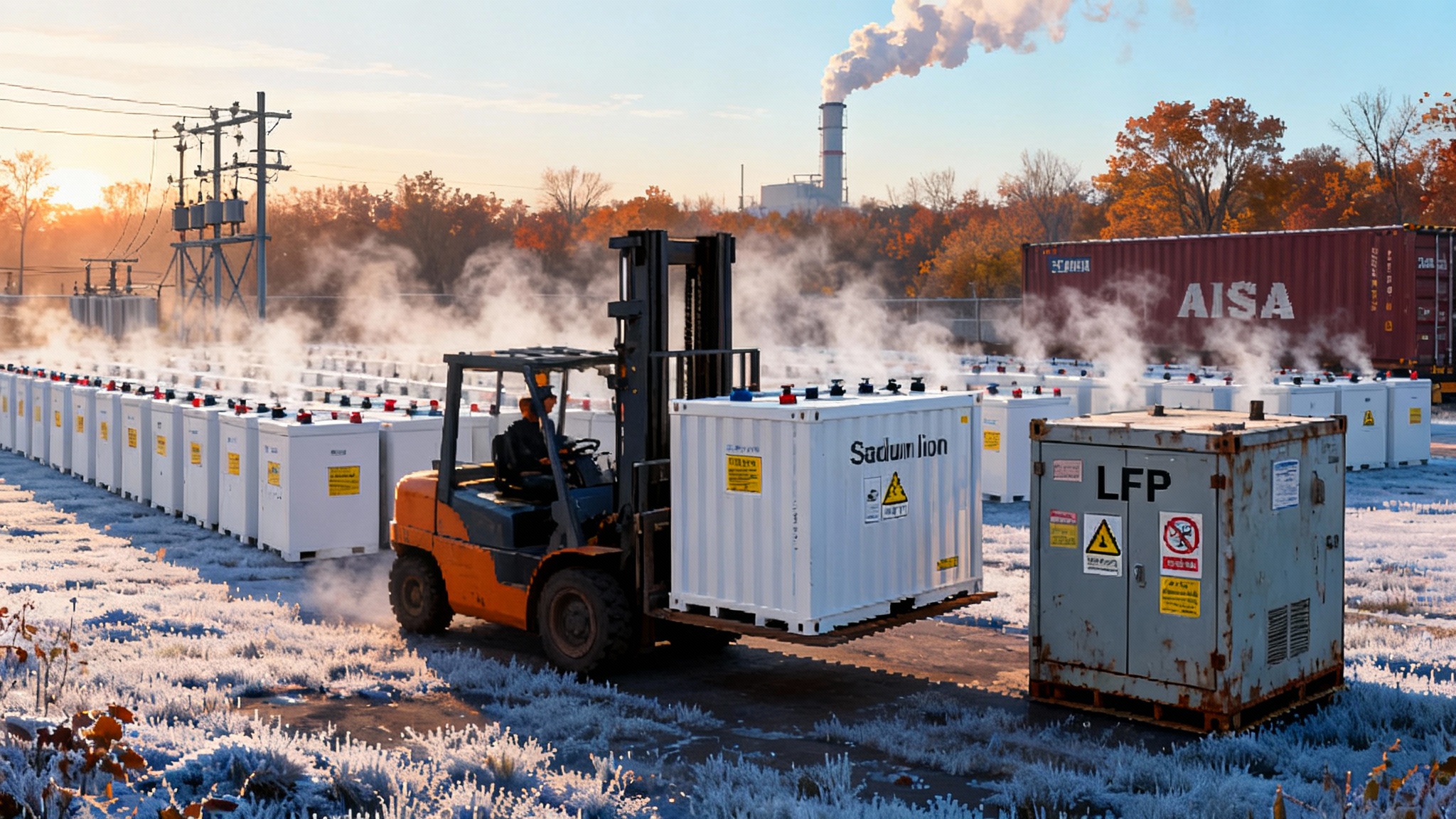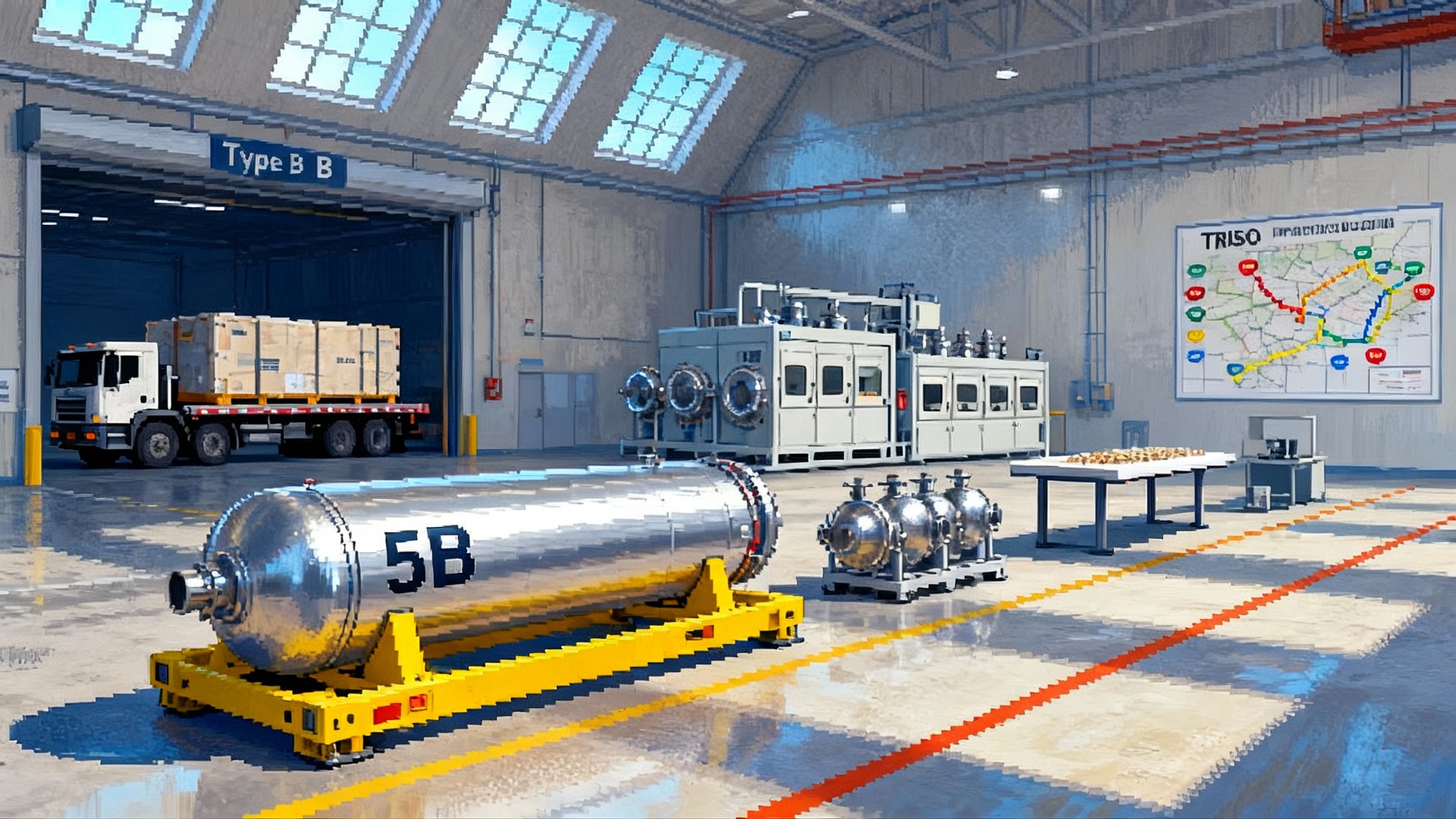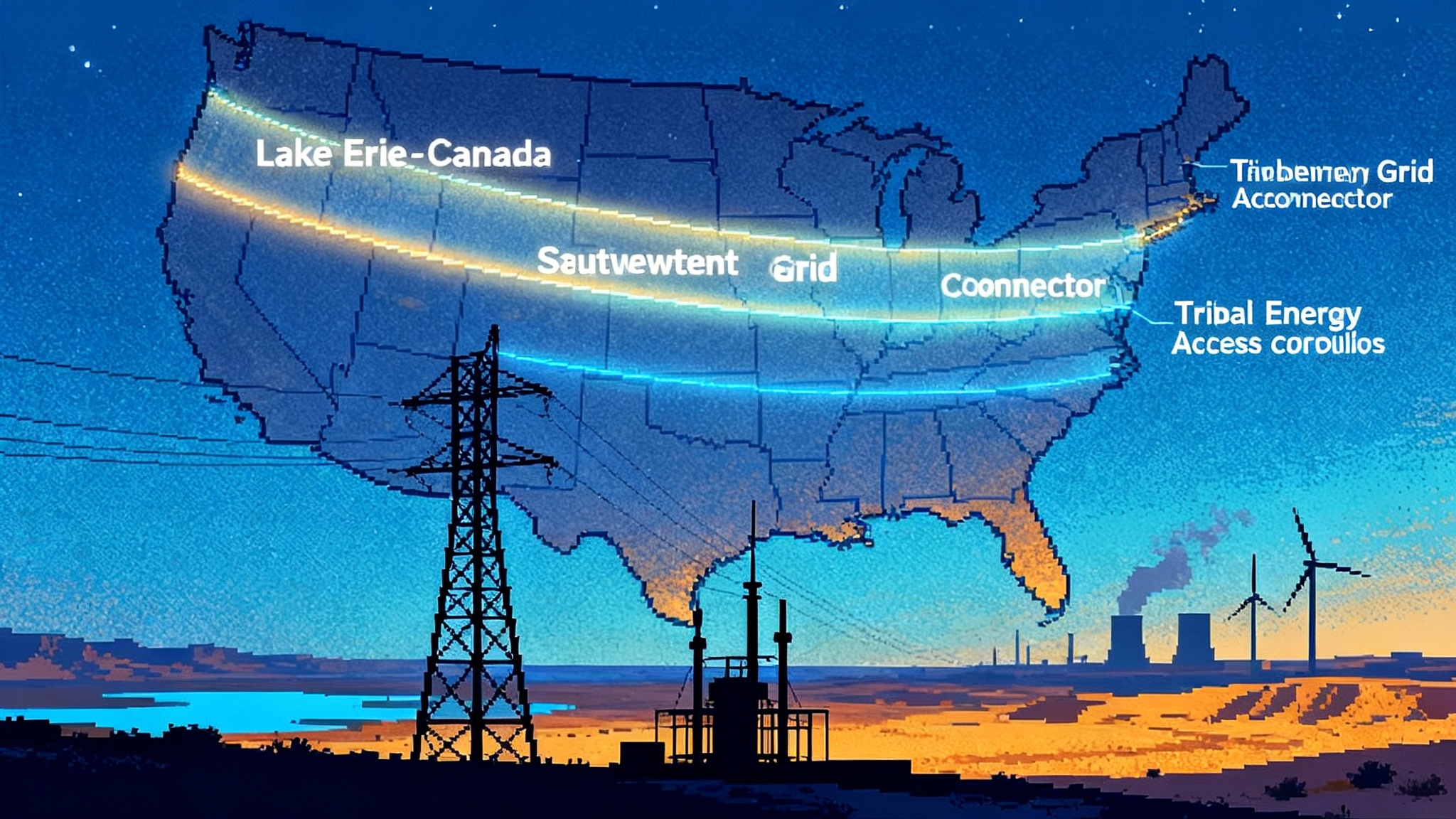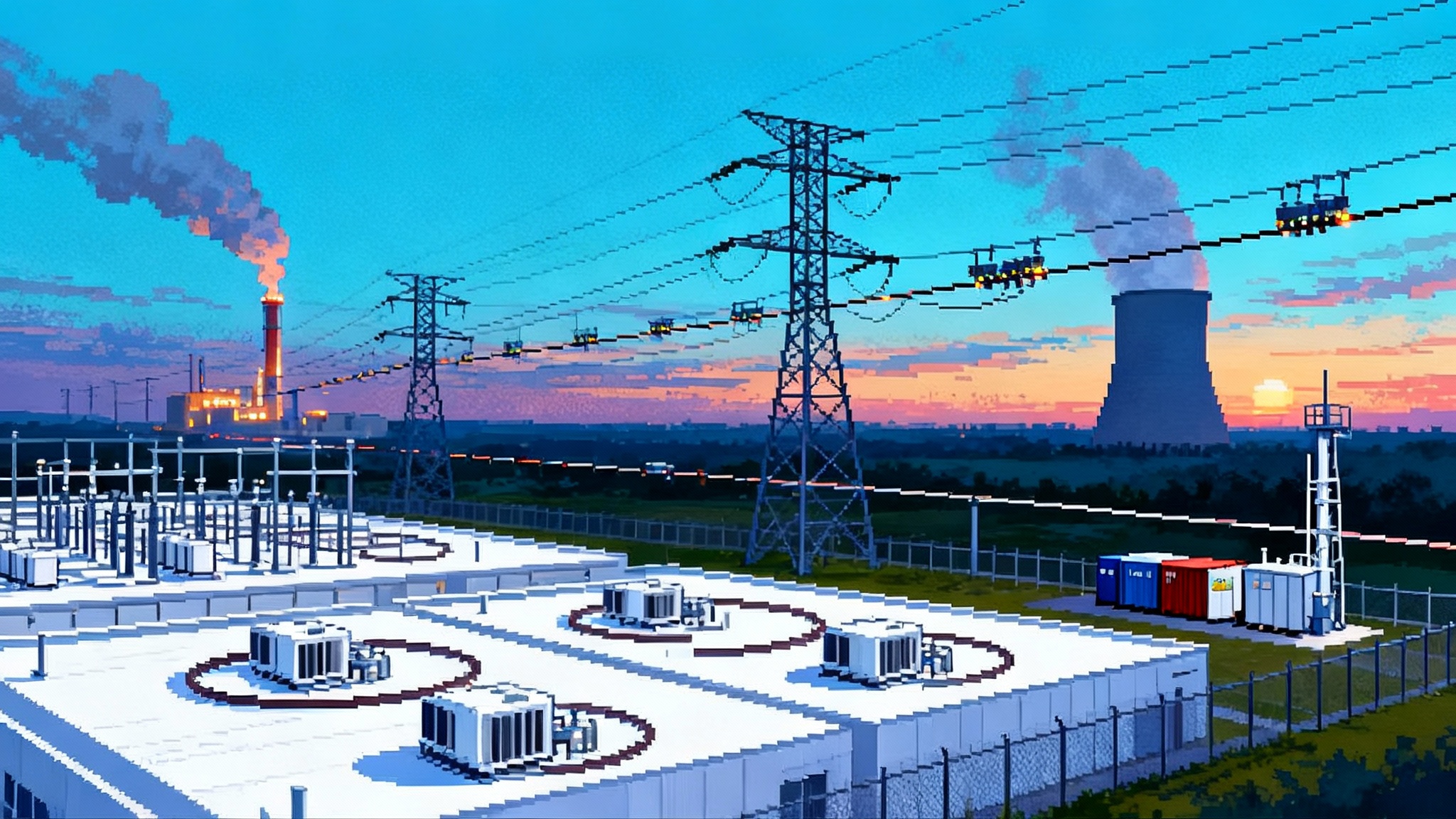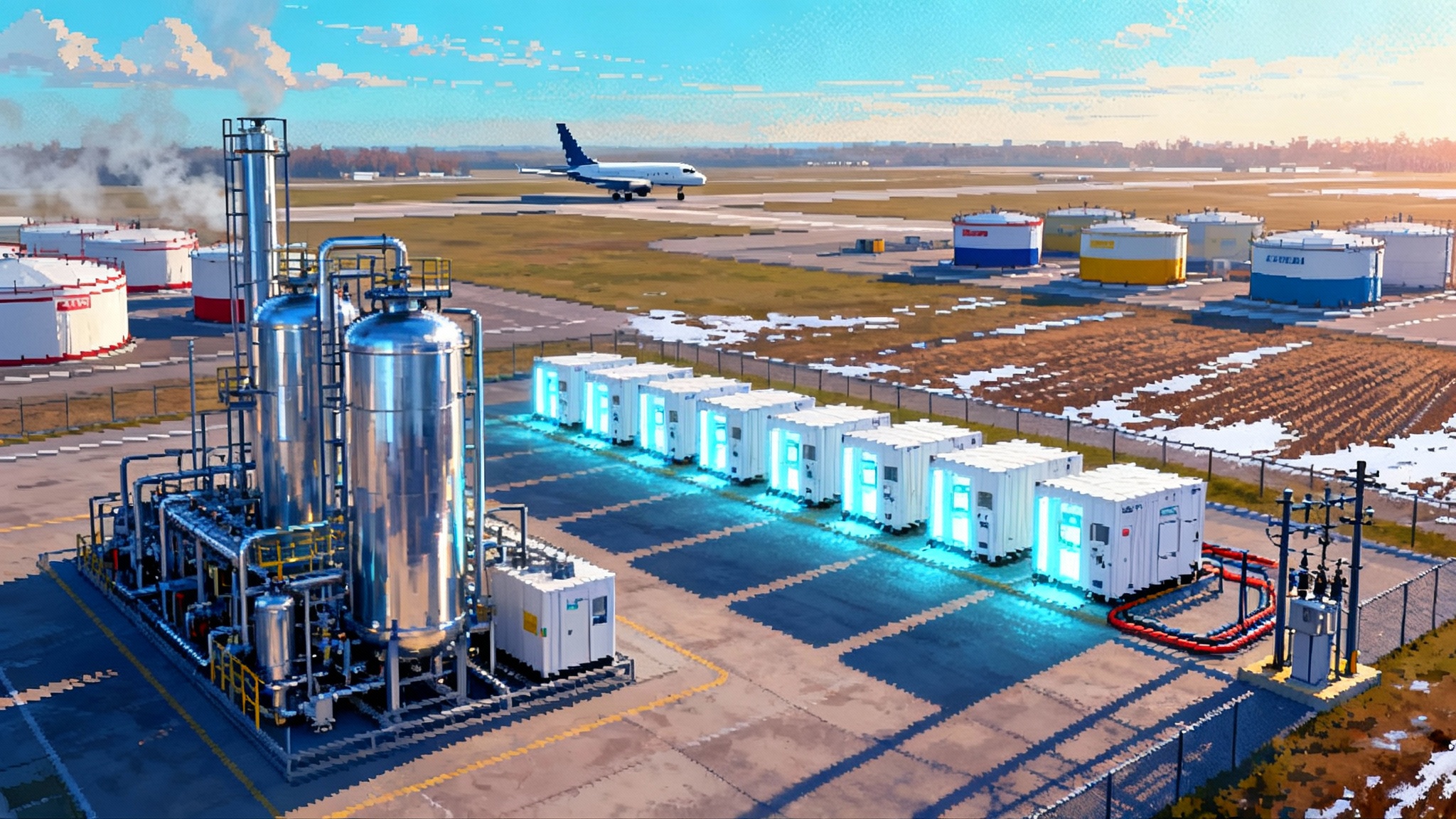FERC 881’s 2025 Pivot: Ambient Ratings Now, Dynamic Next
Order 881 made hourly, weather-aware ratings the new floor for U.S. transmission in July 2025. Here is what changed in control rooms, where dynamic line ratings go next, and how to capture value first.

Breaking, but long in the making
July 2025 was the first big check-in for the United States transmission grid under Federal Energy Regulatory Commission Order 881. After years of planning, ambient-adjusted ratings, or AARs, became the new baseline for how much electricity lines can carry. The rule asks operators to stop using one static, worst-case limit and instead recalculate limits based on temperature and solar conditions, updated at least hourly. The goal is simple: use more of the grid we already have. FERC’s 2021 final rule set that course and also foreshadowed the next step by asking markets to be ready for utilities that want to use dynamic line ratings. That readiness is finally materializing. FERC’s rule summary and statements make the two-stage plan clear. For how this aligns with broader policy, see the 2026 transmission pivot and Order 1920.
By October 2025, FERC staff teed up the follow-on push. In public briefings and a fresh docket, staff outlined a path to require more accurate, condition-based ratings in places where wind and congestion are persistent. The message to markets and transmission owners is direct. Ambient-adjusted ratings are the floor. Dynamic line ratings are next.
What AARs actually change on the control room floor
AARs recalculate a line’s thermal limit using current or forecasted ambient temperature and the presence or absence of solar heating. That is enough to make a difference. Picture a long highway with variable speed limits that change when the road is empty and the weather is cool. For years many control rooms posted a single, conservative limit on that highway. AARs swap that out for an adaptive sign that updates every hour. Operators do not drive faster than safety allows, they simply stop driving slower than they must.
Real world examples match the metaphor. In shoulder seasons, cool nights, and windy afternoons, AARs can lift limits several percent above seasonal ratings. On a congested interface, even three to five percent more headroom can cut redispatch costs and reduce curtailments. Because AARs lean on existing weather data and software, utilities can roll them out without field sensors and without taking lines out of service.
The flip side is important. AARs do not account for wind cooling, conductor sag, or localized conditions that can vary mile by mile. On the hottest still days, they may also reduce ratings relative to a coarse seasonal value. That is a feature, not a bug. The practice improves accuracy, which is what keeps both reliability and market outcomes on firmer ground.
Dynamic line ratings, explained without jargon
Dynamic line ratings, or DLRs, upgrade the speed limit sign one more time. Instead of relying only on air temperature and sun, DLRs pull in wind speed and direction, cloud cover, and sometimes direct measurements of conductor temperature, sag, or clearance. When the breeze is steady and aligned with the line, conductors shed heat and can safely carry more current. When icing or low cloud cover threatens, ratings fall to keep clearances safe.
Think of a marathon runner. On a cool, breezy day with a tailwind the runner can hold a faster pace at the same heart rate. DLRs are that tailwind for the grid. They do not turn a two-lane road into a four-lane expressway. They simply let the existing road operate at the right speed for the conditions.
Late 2025 Commission actions point toward a DLR rulemaking that targets the lines where this matters most. Expect requirements that focus on corridors with frequent congestion and reliable wind or weather patterns, paired with transparency rules for how ratings are calculated and shared. Markets will need to ingest ratings at least hourly and in some cases more often in operations, then propagate those values through contingency analysis and commitment and dispatch tools. Rising data center demand, detailed in AI’s gigawatt appetite and demand shifts, raises the stakes for unlocking this capacity.
Early deployments are already freeing capacity
The clearest signal that this is not just theory comes from systems that have turned DLRs on.
-
In October 2025, PJM began ingesting DLR data from PPL Electric Utilities on three 230 kilovolt lines in northeastern Pennsylvania. The project aims to reduce congestion on historically constrained paths and is expected to save customers an estimated 23 million dollars per year as more accurate limits flow through both reliability and market processes. PJM documented the activation and objectives in its own operations update. PJM’s report on PPL’s DLR activation shows how forecast and real-time ratings now inform dispatch.
-
In New York, National Grid brought the state’s first operational DLR installation into its control room in 2024. Operators now see automated, condition-specific ratings on four upstate lines that regularly ferry renewable generation. The capacity lift tends to arrive when it matters most, during windy periods with high production.
-
In the Midwest, cooperative and Generation and Transmission owners have reported sizable latent headroom on monitored segments during peak hours. One large deployment found that conductor capacity during hot summer peaks could run tens of percent above seasonal assumptions. Not every ampere converts to realized transfer, because the most limiting element in a circuit sets the pace, but the findings are consistent. Weather and condition-aware ratings reveal useful headroom that blunt redispatch costs and curtailments.
The trend is the point. Where operators have live DLR data flowing into Energy Management System screens and market models, they report fewer surprises, lower congestion costs, and clearer visibility into when a reconductoring or rebuild will truly be needed. That visibility links to procurement challenges described in the 2025 transformer crunch.
The July milestone was real, the schedule now staggers into 2026-2028
The July 2025 AAR milestone set a national floor, but it did not produce an overnight flip. Several regional transmission organizations and independent system operators requested and received additional time to complete market model changes, data pipelines, and telemetry to support hourly ratings. The result is a stair-step rollout.
-
PJM was granted an extension into April 2026 to implement specific tariff and systems changes for Order 881. The extension aligns system upgrades with operational training and testing cycles.
-
ISO New England’s timeline was extended to December 2026 for core AAR capabilities, tied to a staged deployment of its ratings exchange and history systems.
-
Southwest Power Pool received an extension into September 2026.
-
California Independent System Operator’s extensions run to December 2026 for key systems, reflecting integration with market software and telemetry buildouts.
-
New York Independent System Operator and Midcontinent Independent System Operator received the longest windows, into December 2028, to complete full Order 881 implementation and associated tariff integration. Both are large, complex footprints where multiple transmission owners must update local rating engines, telemetry, and data sharing practices in sync with market systems.
These dates matter for developers and grid owners. They mean the AAR benefits will arrive in phases, with real operational lift in 2025 for some footprints and continued gains through 2026 to 2028 as the remaining markets finish integration. They also set the stage for DLRs. As markets stand up the data plumbing and processes for AARs, they are building the same channels that DLRs will use. That is why FERC’s late 2025 moves focused on clearing remaining policy barriers rather than reinventing the pipeline.
Where to unlock near-term transfer capacity without new steel
The quickest wins share three traits: frequent congestion, regular wind exposure, and thermal rather than stability constraints.
-
Windy renewable corridors at 115 to 230 kilovolts. Lines that collect wind from ridges or plains into larger backbones often see weather conditions that lift ratings at the same time generation spikes. These are prime DLR candidates because wind cooling and production coincide.
-
Interfaces into load pockets. Lines feeding coastal or urban load areas often carry constraints set by conservative thermal assumptions. AARs can lift limits during cool evenings and shoulder seasons. If those gains appear reliably, targeted DLR on the most limiting span can turn seasonal bumps into consistent headroom.
-
Cross-zonal bottlenecks that cause persistent congestion prices. If a single element appears repeatedly as the marginal constraint in market reports, instrumenting that span with DLR can deliver high value even if upstream or downstream elements limit at other times. The trick is to prioritize the true binding element, not the entire corridor.
-
Reconductoring windows. If a line is slated for reconductoring in three to five years, DLR can buy time by safely lifting current limits now and by providing empirical data on sag, temperature, and clearances that helps select the right new conductor and hardware.
For developers and offtakers, the strategy is symmetrical. Look for interconnection points where curtailments track wind or cool weather. Ask the host utility whether AARs will be reflected in the day-ahead and real-time limits at your point of receipt in the 2025 to 2027 window. If not, propose a pilot on the limiting span as a condition of a build-transfer or as part of a congestion cost sharing arrangement. The commercial leverage is strongest where a small lift in limit unlocks a large block of deliverability.
The vendor landscape, organized by the job to be done
-
Line monitoring and DLR sensors. Utilities in North America are working with firms that provide non-contact sensors mounted on structures, clamp-on temperature monitors, or tension sensors on shield wires. The common feature is real-time visibility into conductor behavior. These platforms often include analytics that translate raw measurements into operator-ready ratings.
-
Weather and forecasting. High quality, site-specific forecasts of ambient temperature, wind speed, and wind direction are the backbone of both AAR and DLR. Vendors provide mesoscale models downscaled to line segments and can integrate local station data. Accuracy of wind forecasts, especially during ramps, is the biggest swing factor in realized value.
-
Rating engines and integration. Energy Management System and Supervisory Control and Data Acquisition vendors have shipped updates to accept hourly ratings, propagate them through state estimator and contingency analysis, and expose ratings to market clearing engines. Transmission owners also deploy local rating engines that calculate span-level limits and push those values via secure application programming interfaces to the control center.
-
Market and planning analytics. Production cost models, nodal market simulators, and grid topology tools help quantify congestion relief from AARs and DLRs before deployment. They also translate ratings into expected dollar savings that can support cost recovery filings.
-
Cybersecurity and data governance. Ratings are now a market-sensitive data stream. Utilities are standardizing on encryption in transit, role-based access, and audit trails for rating changes. Market monitors and transmission providers are building password-protected repositories and clear change logs so that operators and auditors can see when and why a rating changed.
The convergence to watch is simple. As market systems accept hourly ratings and store methodologies in shared repositories, adding DLR becomes less about integrating a new technology and more about pointing existing pipelines at richer data sources.
What the late 2025 policy moves really change
Three shifts stand out in the Commission’s fall activity.
-
Markets must accept more accurate ratings. The explicit push to require systems and procedures that allow transmission owners to reflect DLR in market models removes the most common blocker. Utilities will not invest in monitoring if the resulting ratings are ignored by commitment and dispatch.
-
Targeted requirements beat blanket mandates. Expect any DLR rule to focus on windy and congested spans where benefits are clear. That keeps costs in check and directs attention to the few miles that bind the most often. For planning context, see the 2026 transmission pivot and Order 1920.
-
Transparency is no longer optional. Rating methodologies and values will be shared with transmission providers and market monitors through secure portals. That increases trust and makes audits straightforward. It also lets planners use the new data to improve long-term models.
For utilities, the implications are practical. Start with AARs everywhere the market systems can ingest them in 2025 and 2026. Layer DLR on the one or two elements that most often set the binding constraint. For developers, the opening is to bring a concrete DLR proposal to interconnection meetings on a specific span, backed by a production cost study that shows congestion savings and curtailment reductions.
A short field guide for 2026
-
Identify your top five constraints. Use market reports and outage studies to map the single element that binds most often in your footprint. Rank by congestion dollars and curtailment hours.
-
Screen for weather advantage. For each constraint, pull hourly weather data and ask two questions. Is it often cool or windy when the constraint binds. Does the wind direction align with the line orientation. If yes, DLR is a strong candidate.
-
Quantify with conservative assumptions. Use a one-year backcast with hourly ratings derived from forecastable weather. Apply a safety margin that reflects your operating policy. Tally realized headroom and translate it into congestion savings.
-
Plan the data path first. Before any sensor purchase, design how ratings will flow from the line or model to the Energy Management System and then to market engines. Confirm how the transmission provider will store and display the methodology.
-
Stage the rollout. Go live with AAR calculations as soon as the market platform can accept them. Pilot DLR on one span for one season, then expand. Keep a historian of hourly ratings and outcomes so that regulators can see cause and effect.
-
Align incentives. Work with state commissions to establish trackers or riders that allow quick recovery of low-capital DLR projects in exchange for a share of measured congestion savings. Set a sunset for the rider to keep discipline.
The next two years, in one picture
2025 made hourly, weather-aware limits the new normal. 2026 through 2028 will be the period when operators, markets, and regulators turn that data into money saved and megawatts delivered. The most important actions are not abstract.
-
Transmission providers should finish AAR integration on the schedule they have filed, publish clear rating methodologies, and train operators in how hourly limits change contingency analysis and real-time operations.
-
Transmission owners should target DLR on the few miles that bind most often, not across entire corridors, and should commit to share rating logic and inputs.
-
Developers should propose DLR on the specific span that governs their deliverability, back it with a quantification of savings, and offer to co-fund the pilot if the utility moves fast.
-
Regulators should give a fast lane for cost recovery on low-capital DLR and related telemetry, paired with reporting that shows hourly savings. Where appropriate, they should encourage markets to post anonymized rating histories so that participants can see and plan around the new reality.
The bottom line
The United States does not need to wait for a decade of new rights-of-way to squeeze real transfers out of the existing grid. The July 2025 AAR milestone put adaptive limits in motion. The Commission’s late 2025 actions cleared the policy path for dynamic line ratings. Early projects are already converting that into lower congestion and higher renewable throughput. For grid owners and developers, the winning posture is practical and surgical. Find the few spans that matter, feed markets ratings that reflect physics, and turn cool nights and windy days into megawatts you can count. That is how to move power now, without new steel in the ground, while you design and build the long lines the future will still require.
